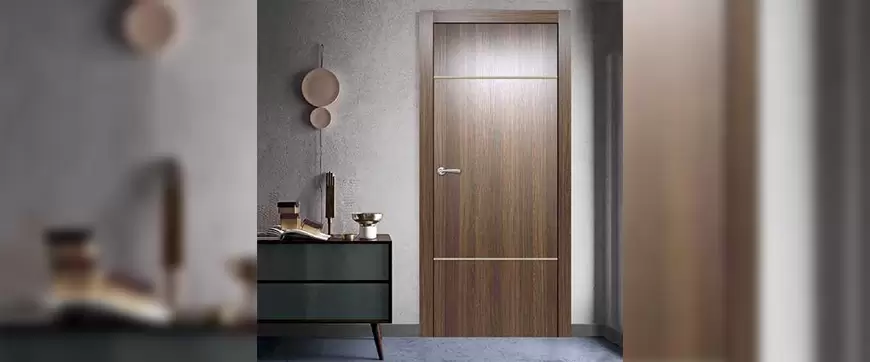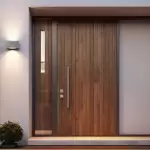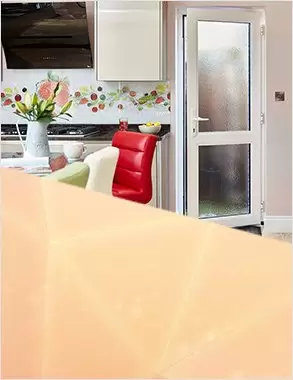When it comes to interior doors, flush doors have gained significant popularity in recent years. Their sleek and minimalist design, combined with their functional benefits, makes them a preferred choice for many homeowners. Doors come in a plethora of styles and designs such as panel doors, revolving doors, flush doors, glass doors, etc. Here we will discuss the various types of flush doors. In this blog, we will explore the meaning of flush doors, delve into their unique characteristics, and discuss the different types available in the market.
Post your Requirement
Types of Flush Doors:
The following types of flush doors are commonly used in homes and other types of buildings.
-
Solid Core Flush Door:

Solid core flush doors are made using hard timber, hence the name. A combination of particle board, MDF, laminated door core, cross band, face wood veneer, block board, etc. is used to manufacture solid core flush doors. Stiles and top and bottom rails of more than 7.5 cm width are also present in the solid core flush doors. The frame is made of timber wood and hardwood lipping is done around the frame to impart more strength and stability to the door. The width of the lipping is always equal to the thickness of the core. Solid core flush doors are heavy and possess high strength. Due to high strength and good sound insulation, solid core flush doors are mainly used as exterior doors for homes and other properties.
-
Cellular Core Flush Door:

The cellular core flush door has a frame constructed of plywoods or wooden battens. The width of each batten is less than 25 mm. The shutter is made by gluing plywood sheets or cross bands and face veneers on both the faces of the core under pressure. The thickness of the plywood sheet is always more than 3 mm.
-
Hollow Core Flush Door:
The hollow core flush door is hollow inside with a honeycomb structure for support. The frame consists of stiles along with top, intermediate, and bottom rails. The spaces between stiles and rails are filled by wooden battens. Plywood sheets or cross bands and face veneers are glued to the core under pressure. The thickness of the plywood sheet is more than 6 mm. Hollow-core flush doors are light in weight and are less strong than solid-core flush doors.
Advantages of flush doors:
-
- Flush doors have a simple design which is easy to construct.
- The flush door has a smooth and even surface that does not split, peel, or rot. Hence, there is no need for periodic refinishing.
- The flush door is resistant to scratches and stains.
- The flush door is resistant to impacts due to its high strength.
- The flush door is treated with chemicals which makes it resistant against termites and general decay.
- The flush door has minimum joints which makes it easy to maintain.
- The flush door is resistant to humidity and other weather elements.
- A flush door is a good sound insulator.
- Flush doors are easy to install and require less accessories for installation.
- Flush doors come in a plethora of decorative finishes such as laminate, veneer, and paint.
- A flush door is cost-effective because the materials used in making it are not very expensive.
Difference between Wooden Door and Flush Door:
Wooden doors and flush doors are two common types of interior doors, each with distinct characteristics. Here are the key differences between wooden doors and flush doors:
-
Construction and Design:
-
- Wooden Doors:
Wooden doors are made entirely of solid wood, such as oak, pine, or mahogany. They feature traditional panel designs, often with raised or recessed panels, giving them a classic and elegant look.
-
- Flush Doors:
Flush doors, on the other hand, are constructed using a core material (solid or hollow) that is covered with plywood, MDF, or other veneer materials. They have a flat and smooth surface, lacking any raised or recessed panels, offering a minimalistic and contemporary aesthetic.
-
Appearance:
-
- Wooden Doors:
Wooden doors have a natural and authentic appearance, showcasing the unique grain patterns and textures of the wood. They exude warmth, charm, and a timeless appeal that can enhance traditional or rustic interior styles.
-
- Flush Doors:
Flush doors have a sleek and clean appearance, with a smooth surface that can be painted, veneered, or laminated to match various interior design schemes. They are known for their minimalist and modern look, blending well with contemporary or minimalist aesthetics.
-
Durability and Maintenance:
-
- Wooden Doors:
Wooden doors are generally more durable and sturdy due to their solid wood construction. They can withstand impacts and wear over time, but they may require periodic maintenance such as refinishing, sealing, or polishing to preserve their appearance and protect against moisture.
-
- Flush Doors:
Flush doors are also durable but may not be as resistant to impacts as solid wood doors. However, their maintenance is relatively easier since the smooth surface is easier to clean and requires less upkeep compared to wooden doors.
-
Cost:
-
- Wooden Doors:
Solid wood doors tend to be more expensive than flush doors. The cost can vary depending on the type of wood used, design complexity, and craftsmanship involved.
-
- Flush Doors:
Flush doors are generally more affordable compared to wooden doors due to their construction using core materials and veneers. They provide a cost-effective option without compromising on style and functionality.
-
Sound and Thermal Insulation:
-
- Wooden Doors:
Solid wood doors provide better sound insulation due to the density of the wood. They can effectively block noise transmission between rooms and provide some level of thermal insulation.
-
- Flush Doors:
Flush doors, especially those with solid cores, can offer decent sound insulation, but they may not be as effective as solid wood doors. Their insulation properties can vary based on the core material used.
Conclusion
Flush doors offer a sleek and minimalist solution for interior spaces while providing various functional benefits. Whether you opt for a solid core, hollow core, veneered, or laminated flush door, they offer durability, ease of maintenance, and a contemporary appearance. Understanding the types and characteristics of flush doors will help you make an informed decision when selecting the perfect door for your home, adding both style and functionality to your living spaces.


























Post A Comment